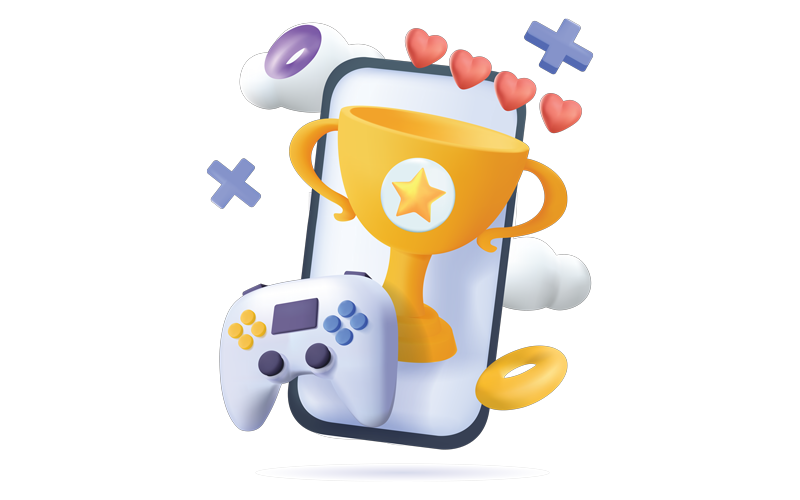Workplace: Gamification as a productivity booster

How to use gamification to make work more interactive and motivating.
In a working world increasingly characterised by remote work, companies face the challenge of developing innovative strategies to motivate employees and increase their productivity.
One method that is receiving more and more attention is gamification – the integration of playful elements into work processes. Given that 52% of employees worldwide are actively looking for a new job or are at least open to offers, factors such as job commitment, corporate culture and work-life balance are becoming increasingly important. But how can gamification be used to strengthen these central aspects and, at the same time, make everyday work more interactive and motivating?
From an early age, people love to play. Gamification in a professional context exploits this natural need for fun, success and recognition. By establishing models and systems in which employees can collect points, badges or rewards for achieving goals, companies transform everyday tasks into motivating challenges. Tools such as Zoom, Microsoft Teams and Slack already integrate playful elements to promote user interaction.
Psychologically, gamification is based on principles such as goal setting, feedback and competition. Clearly defined goals and visible progress promote motivation, while a healthy level of competition among colleagues can stimulate ambition. At the same time, gamification strengthens the feeling of autonomy, competence and belonging to a team.
How do we use gamification and what are the most important success factors?
1. Missions and characters
Create scenarios in which teams act as characters with specific skills. This encourages creative problem-solving and collaboration.
For example, a marketing team could act as discoverers to ‘develop’ new customer segments.
2. Unlocking skills and progression
Develop systems in which employees can learn new skills or demonstrate progress by completing tasks. This approach motivates and supports individual development.
3. Challenges between teams
Organise competitions in which different departments compete to create the best solutions to common goals or to work together across departments. This can strengthen collaboration and add a playful component at the same time.
As an example, the IT team develops a QR code that the marketing team uses at events to collect contact details from visitors. In recognition of creatively supporting other departments with a useful solution, the IT team receives special benefits from the company.
Creating a content strategy to implement gamification
Gamification is more than just using game mechanics; it’s about making them meaningful and strategic. A well-thought-out digital content strategy plays a key role here. Companies should create content that matches the preferences and motivations of their employees.
Gamified workshops or further training show how effective this method can be. According to a survey by learning management system TalentLMS, the engagement rate for workshops and training courses with gamification elements increased by 80%. Such content not only increases willingness to participate but also promotes collaboration and a sense of belonging within teams.
Companies should create content that matches the preferences and motivations of their employees. Gamified workshops show how effective this method can be”
The central success factors of gamification
1. Personalisation and relevance: Game content should be tailored to the individual needs of employees. Prizes and recognition, such as birthday wishes or badges that can be shared on LinkedIn, create a personal connection. Some gamification systems award certificates for successful completion.
2. Define clear workflows for creating and maintaining gamification content: Regular feedback and adjustments keep the mechanics contemporary and exciting.
3. Integration into existing tools: Choose platforms that integrate seamlessly into existing work environments. This makes it easier to introduce and accept gamified approaches.
4. Measurable results: Monitor key metrics such as engagement, productivity and employee satisfaction to assess and optimise the success of your gamification initiatives.
Gamification as a game changer at work
Overall, gamification offers companies a promising opportunity to promote productivity and engagement in the workplace. Supported by strategic content, companies can create a motivating and entertaining work environment. To fully exploit the advantages of this method, companies should always think employee-orientated, select platforms sensibly and regularly review the results. The first step? Ask your employees what motivates them. Gamification isn’t just a game – it’s a way to reimagine work.
Marisa Pereira is vice president of people at Storyblok
Image credit | Shutterstock
